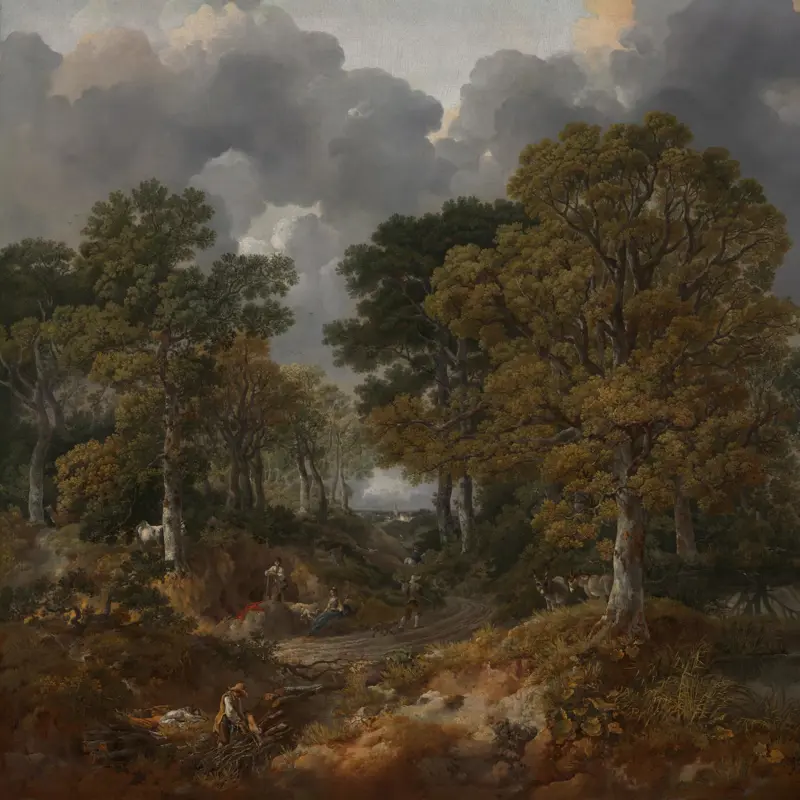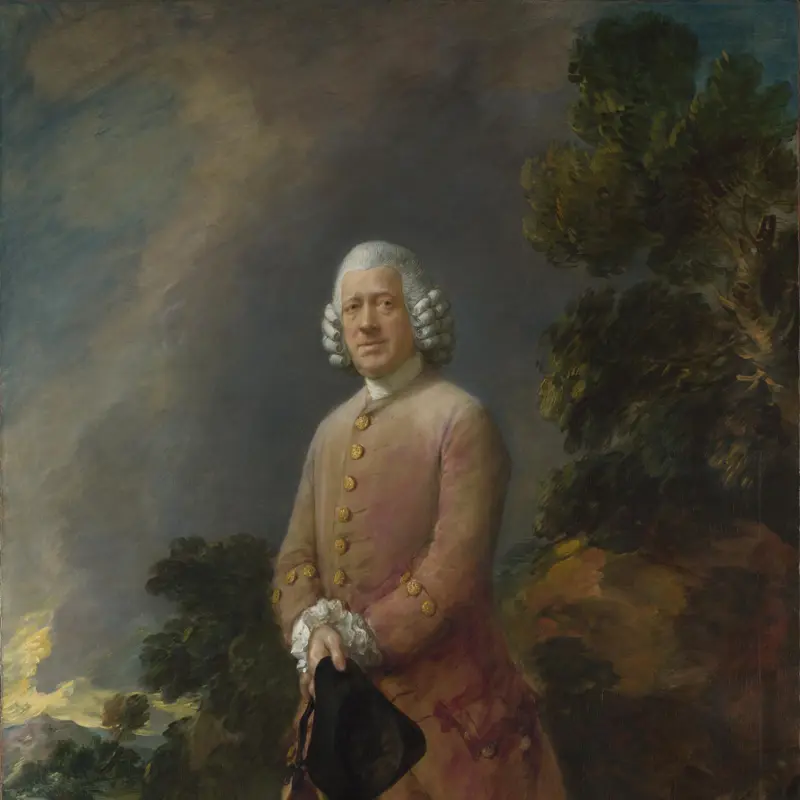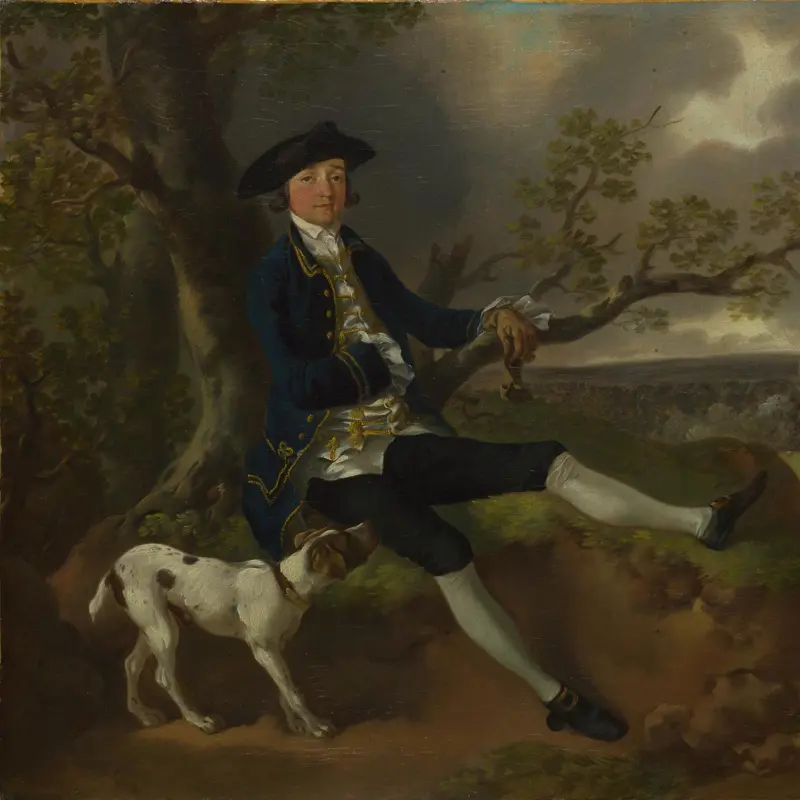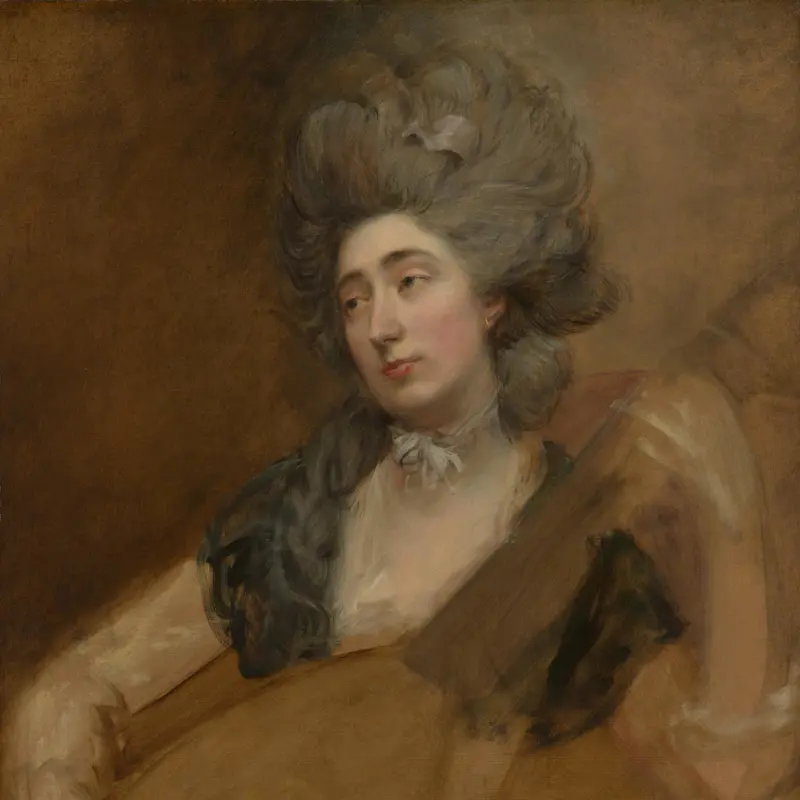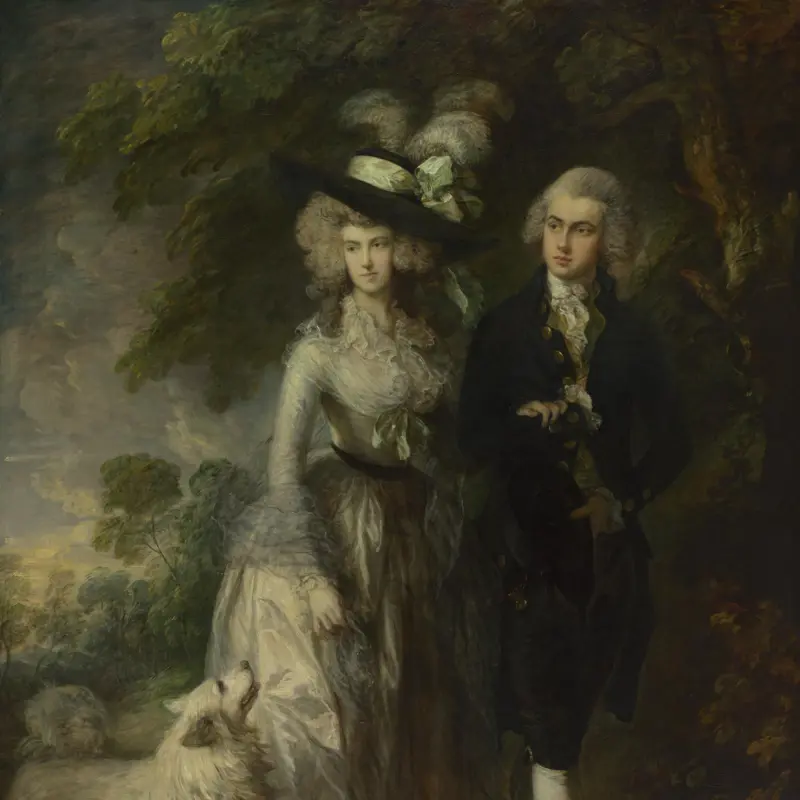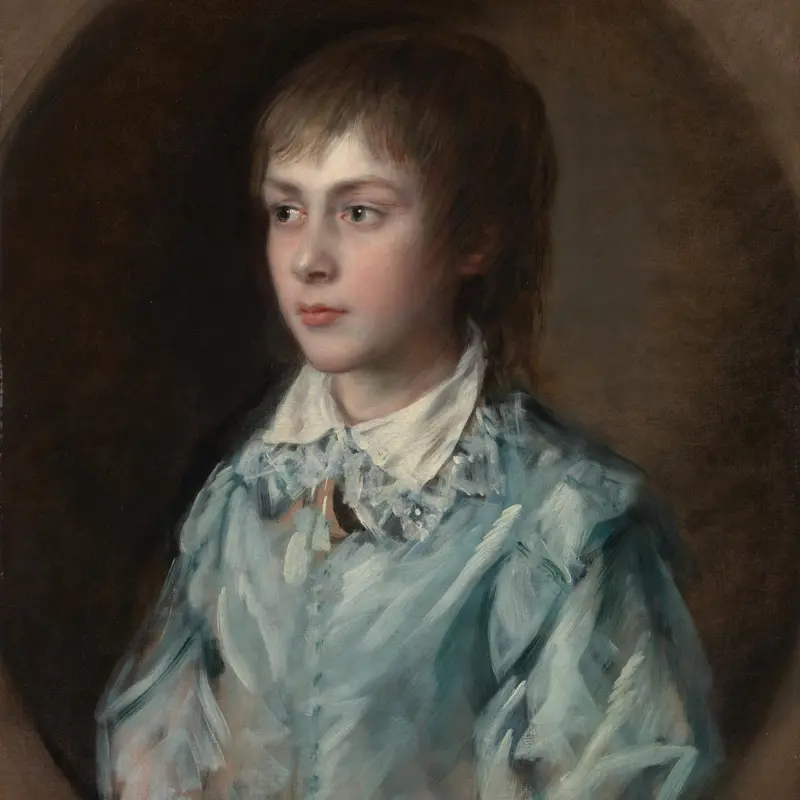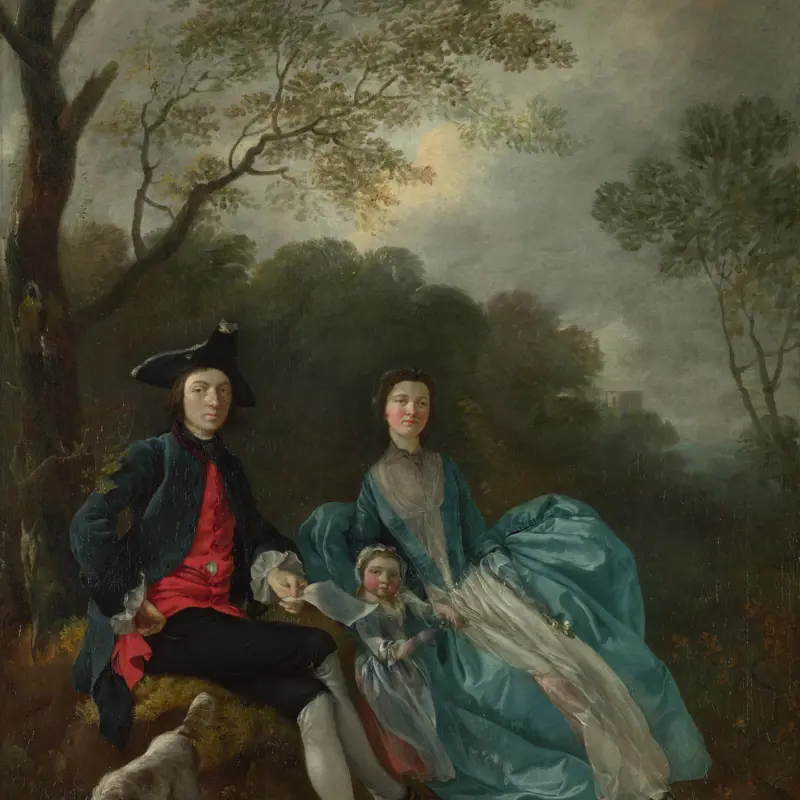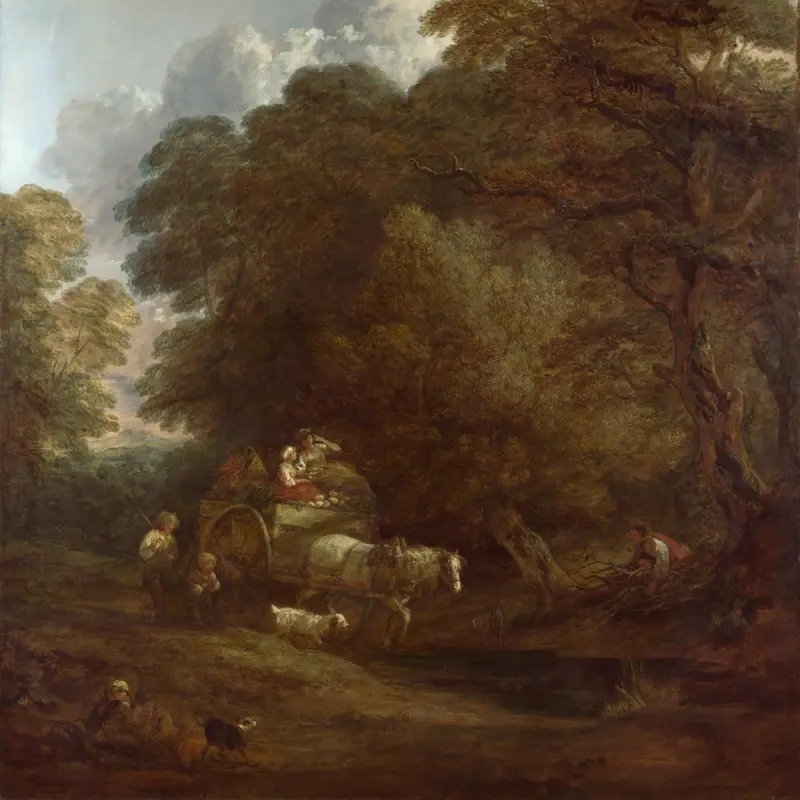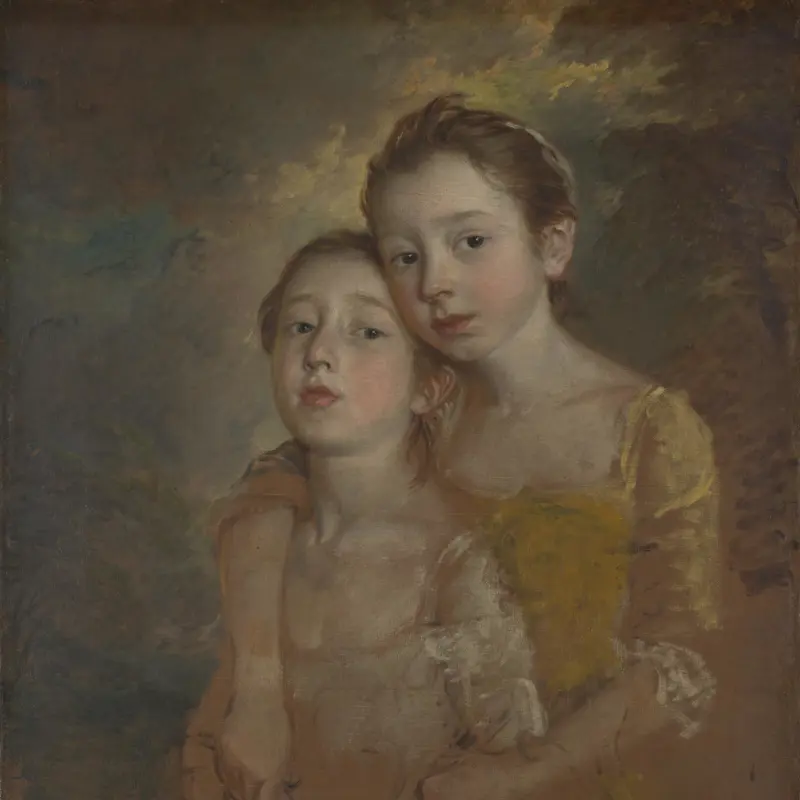Thomas Gainsborough, 'Mrs Siddons', 1785
About the work
Overview
Mrs Siddons (1755–1831) was the greatest tragic actress of her time, remaining at the top of her profession for 30 years. Gainsborough painted her in the winter of 1784–5, during her third London season.
Most of Mrs Siddons’s earlier portraits depict her in character, but Gainsborough portrayed her off-stage and in fashionable contemporary dress. She wears a black beaver hat trimmed with ribbon and ostrich feathers, and a blue striped ‘wrapping-gown’, yellow mantle and fox-fur muff. Gainsborough apparently found some difficulty in capturing Mrs Siddons’s distinctive features, and is said to have exclaimed: ‘Confound the nose, there’s no end to it!’
At the time Gainsborough painted her, Mrs Siddons was playing the greatest of all her roles – Lady Macbeth. Something of the power and passion of that part can be felt in the portrait, considered by some as the artist’s masterpiece.
Key facts
Details
- Full title
- Mrs Siddons
- Artist
- Thomas Gainsborough
- Artist dates
- 1727 - 1788
- Date made
- 1785
- Medium and support
- Oil on canvas
- Dimensions
- 126 × 99.5 cm
- Acquisition credit
- Bought, 1862
- Inventory number
- NG683
- Location
- Room 34
- Collection
- Main Collection
- Frame
- 18th-century English Frame
Provenance
Additional information
Text extracted from the ‘Provenance’ section of the catalogue entry in Judy Egerton, ‘National Gallery Catalogues: The British Paintings’, London 2000; for further information, see the full catalogue entry.
Exhibition history
-
2010Thomas Gainsborough and the Modern WomanCincinnati Art Museum18 September 2010 - 2 January 2011The San Diego Museum of Art29 January 2011 - 1 May 2011
-
2014Making ColourThe National Gallery (London)18 June 2014 - 7 September 2014
-
2016The English Rose: Feminine Beauty from Van Dyck to SargentThe Bowes Museum14 May 2016 - 25 September 2016
-
2018Gainsborough and the TheatreHolburne Museum of Art5 October 2018 - 20 January 2019
-
2020Masterpieces from the National Gallery, LondonThe National Museum of Western Art18 June 2020 - 18 October 2020The National Museum of Art3 November 2020 - 31 January 2021
-
2021Botticelli to Van Gogh: Masterpieces from the National Gallery, LondonNational Gallery of Australia5 March 2021 - 14 June 2021
-
2022Gainsborough's Blue BoyThe National Gallery (London)25 January 2022 - 15 May 2022
Bibliography
-
1838G.F. Waagen, Works of Art and Artists in England, trans. H. Lloyd, vol. 2, London 1838
-
1856G.W. Fulcher, Life of Thomas Gainsborough, R.A., London 1856
-
1857W. Bürger, Trésors d'art exposés à Manchester en 1857 et provenant des collections royales, des collections publiques et des collections particulières de la Grande Bretagne par W. Burger, Paris 1857
-
1904W. Armstrong, The Peel Collection and the Dutch School of Painting, London 1904
-
1915W.T. Whitley, Thomas Gainsborough, London 1915
-
1925T. Warde, 'Readers' Queries and Replies: Gainsborough's Original "Siddons"', 11 April 1925
-
1937H. Walpole, Horace Walpole Correspondence, ed. W.S. Lewis, 48 vols, New Haven 1937
-
1946Davies, Martin, National Gallery Catalogues: British School, London 1946
-
1946M. Davies, Paintings and Drawings on the Backs of National Gallery Pictures, London 1946
-
1959Davies, Martin, National Gallery Catalogues: British School, 2nd edn (revised), London 1959
-
1968P.H. Highfill, K.A. Burnim and E.A. Langhams, A Biographical Dictionary of Actors, Actresses, Musicians, Dancers, Managers & other Stage Personnel in London, 1600-1800, 16 vols, Carbondale 1968
-
1969J.T. Hayes, 'Gainsborough's "Richmond Water-Walk"', The Burlington Magazine, CXI, 1969, pp. 28-31
-
1978Cleveland Museum of Art, Handbook: The Cleveland Museum of Art, Clevaeland 1978
-
1992J.T. Hayes, British Paintings of the Sixteenth through Nineteenth Centuries, Washington 1992
-
1993Sotheby's, Sale Catalogue, London, 10 November 1993
-
1995A. Ribeiro, The Art of Dress: Fashion in England and France 1750-1820, New Haven 1995
-
1998J. Egerton, The British School, London 1998
-
1999A. Asfour and P. Williamson, 'Gainsborough's "Mrs Siddons": The Woman as Artist', British Art Journal, I/1, 1999, pp. 38-45
-
2000Egerton, Judy, National Gallery Catalogues: The British Paintings, revised edn, London 2000
-
2001
C. Baker and T. Henry, The National Gallery: Complete Illustrated Catalogue, London 2001
About this record
If you know more about this work or have spotted an error, please contact us. Please note that exhibition histories are listed from 2009 onwards. Bibliographies may not be complete; more comprehensive information is available in the National Gallery Library.

